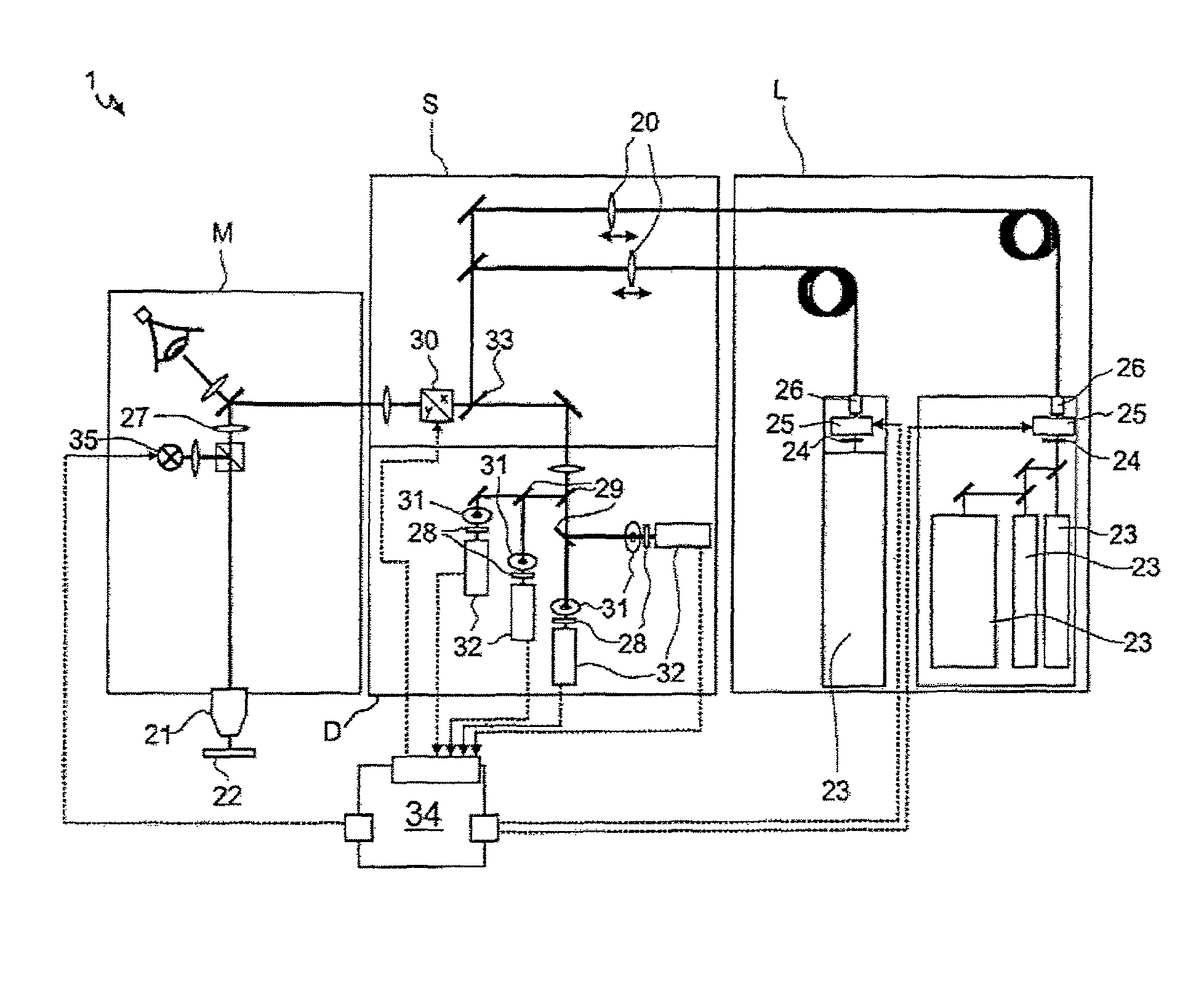Method for generating images with an expanded dynamic range and optical device for carrying out such a method, in particular a laser scanner microscope
a laser scanner and dynamic range technology, applied in the field of laser scanner microscopes, can solve the problems of insufficient signal-to-noise ratio (snr), poor contrast, and heterogeneous distribution of concentration in the samples to be examined, and achieve the effects of increasing the dynamic range, improving signal, and increasing laser intensity
- Summary
- Abstract
- Description
- Claims
- Application Information
AI Technical Summary
Benefits of technology
Problems solved by technology
Method used
Image
Examples
Embodiment Construction
[0036]In describing preferred embodiments of the present invention illustrated in the drawings, specific terminology is employed for the sake of clarity. However, the invention is not intended to be limited to the specific terminology so selected, and it is to be understood that each specific element includes all technical equivalents that operate in a similar manner to accomplish a similar purpose.
[0037]FIG. 1 schematically shows a laser scanning microscope 1 whose control unit 34 is arranged for carrying out the method in accordance with the invention. The LSM 1 is composed in a modular manner from an exposure module L with lasers 23, a scanning module S, a detection module D and the microscope unit M with the microscope lens 21.
[0038]The light of the laser 23 can be influenced by light flaps 24 and attenuators 25, for example, an acusto-optically tunable filter; AOTF of the control unit 34 before it is fed via optical fibers and coupling lenses 20 into the scanning unit S and com...
PUM
 Login to View More
Login to View More Abstract
Description
Claims
Application Information
 Login to View More
Login to View More - R&D
- Intellectual Property
- Life Sciences
- Materials
- Tech Scout
- Unparalleled Data Quality
- Higher Quality Content
- 60% Fewer Hallucinations
Browse by: Latest US Patents, China's latest patents, Technical Efficacy Thesaurus, Application Domain, Technology Topic, Popular Technical Reports.
© 2025 PatSnap. All rights reserved.Legal|Privacy policy|Modern Slavery Act Transparency Statement|Sitemap|About US| Contact US: help@patsnap.com



